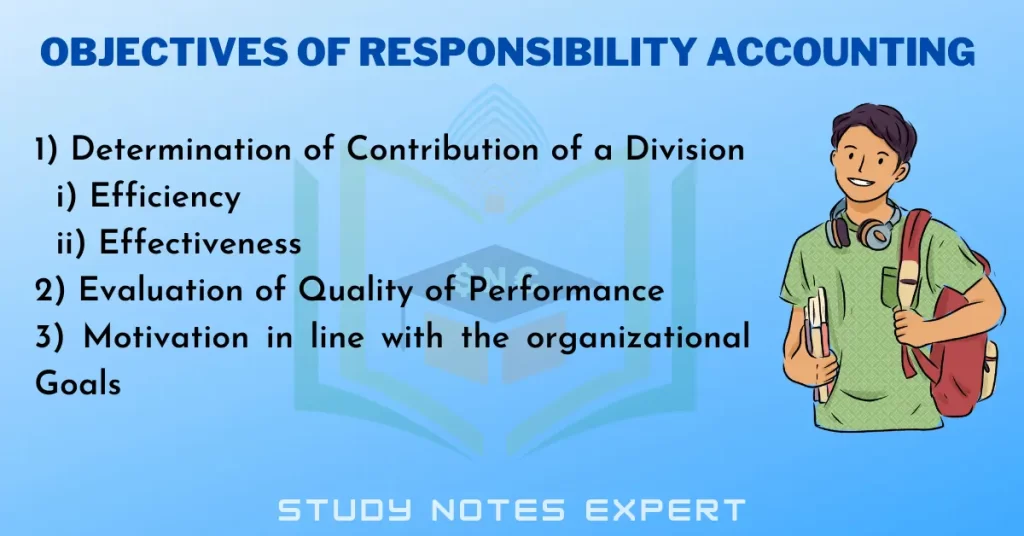Responsibility Accounting is very crucial for every business’s success. Decentralization of authority is at the heart of the modern approach to management. For businesses, there is a general perception that managers in profit centers have an upper level of decentralized decision-making authority as opposed to the authority held by cost-center managers.
But this might only be the case in some cases. The decentralization or delegation of power is the moment’s requirement, particularly in large organizations. Size, as it is almost impossible for upper management to take every decision at their level.
Alongside the authority of the middle levels of management by the administration comes accountability, whose level is proportional to the degree of authority. Authority and accountability are two of the most significant aspects that are considered in the process of creating an effective managerial control program.
Meaning of Responsibility Accounting
Commercial organizations’ management has standard budgetary control and costing tools available to ensure they can control costs (and increase the profit). In both these tools, the emphasis is on the control method to reach the goal of controlling cost.
The role of those who operate these tools is not part of the equation. As part of the responsibility system accounting, the main focus is placed on the accountability of those who handle these tools for cost control.
The term “responsibility accounting” can be defined as an element of the Management Information System (MIS) that involves collecting data related to costs, revenue, and profit of an individual manager who is accountable directly for their actions. After compiling these data, they are passed to those at the superior management who can take the necessary actions.
Definition of Responsibility Accounting
Based on Anthony and Reece, “Responsibility accounting is the kind of management accounting that gathers and publishes both the actual and planned information on accounting in terms of the responsibility centers”.
In the words of Charles T. Horngren, “Responsibility accounting is a type of accounting that recognizes the diverse decision-making centers throughout an organization and trace costs to individual managers who are responsible for making the decisions on the expenses in question”.
Major Objectives of Responsibility Accounting

Different goals of responsibility accounting could be grouped in the three categories:
1) Determination of Contribution of a Division
There are two fundamental indicators to assess the performance of a responsible center, viz. :
i) Efficiency
Efficiency measures the relation between inputs from a responsible center and the output produced. According to the definition that efficiency is an expression of relative value. A center capable of higher yield levels (output) but with a lower input (input) is considered an effective center. However, an accountability center that demands an increased amount of resources (information) and an inferior level of return (output) is considered to be an inefficient one.
ii) Effectiveness
Effectiveness refers to a measure of the relationship with the responsible center’s results and the business’s organizational purpose. If the production of the accountable center is close to its anticipated share of the organization’s goal or even exceeding it. In that case, the center is deemed to be successful. In contrast, when it is found that the difference between the outputs of a responsible center and its expected percentage of the goal is more prominent and harmful, the responsibility center is deemed ineffective.
2) Evaluation of Quality of Performance
A vital aspect of the responsibility system accounting is the measurement of performance for different divisions, on the one hand, and the assessment of the performance of the division head on the other. This is a factor that can be a source of influencing the behavior of managers. Responsibility accounting will include a discussion on the issue, i.e. impact of the nature of accounting information on management.
3) Motivation in line with the organizational Goals
It is evident that in the previous paragraphs, an assessment system for performance is influenced by the actions of the division head. Therefore, the system of performance measurement must have an integrated mechanism to ensure that division heads, when working, cannot achieve the organizational goal.
This is referred to in the field of goal congruence. The head and the division could be motivated by introducing an incentive system for high performance with bonuses increments, cash rewards or other benefits.
Elusive Types/Approaches of Responsibility Accounting

The accounting system for responsibility can be classified into three categories:
1) Activity-Based Responsibility Accounting System
The system was used to measure the performance of actions, to which the financial and non-financial metrics are utilized. This type of accounting is best suited for large organizations with an extremely high degree of IT support and where the working environment is constantly changing and with a proactive method of advancing their business.
2) Functional-Based Responsibility Accounting System
Functional-based accountability accounting is suitable for companies that operate in more or less stable environments (as against the dynamic one). The performance is evaluated solely in terms of financial performance without focusing on the non-financial side entirely. Different departments are assigned clearly defined responsibilities in this kind of accounting system.
3) Strategic-Based Responsibility Accounting System
The accounting system for strategic-based accountability, often referred to as a balanced scorecard vision, mission and strategy, is interpreted to operational objectives and analyzed using the following perspectives:
- Financial outlook
- perspective of the customer
- Philosophy of the process
- A perspective from the Infrastructure view
Complete Process/Steps Involved in Responsibility Accounting
Information flow quickly is the primary goal of the system of accountability accounting. The transfer of important information to the appropriate person promptly involves the following steps:
- Establishing the targets in consultation with all participants and communicating the same promptly to each center head.
- The measurement of the actual results against the goals of a center of responsibility regularly. It is presenting the results concerning this aspect to the director of the center of responsibility.
- The instances of deviation from the goal communicate to the management in charge with the relevant details. These details are the name of the center of responsibility, the manager in charge, the manager’s name, etc.
- Making suggestions for corrective actions against ineffective performance and communicating this information to the manager of the responsible center.
What is the Primary Objective in Designing a Responsibility Accounting System?
The primary objective in designing a responsibility accounting system is to offer managers statistics that can be used to assess their overall performance and to make higher selections. It should provide a correct photograph of the expenses and blessings associated with the supervisor’s decisions and movements, and it has to be tailored to the specific wishes of the agency.
What are the 3 Types of Responsibility?
1. Legal Responsibility: This is an obligation imposed through regulation, together with the duty to obey the regulation and pay taxes. 2. Ethical Responsibility: This is a duty based totally on moral values, which includes the obligation to recognize the rights of others and to act with integrity. 3. Social Responsibility: This is a responsibility to act in first-class interest of the community, such as duty to shield the surroundings and assist those in need.

